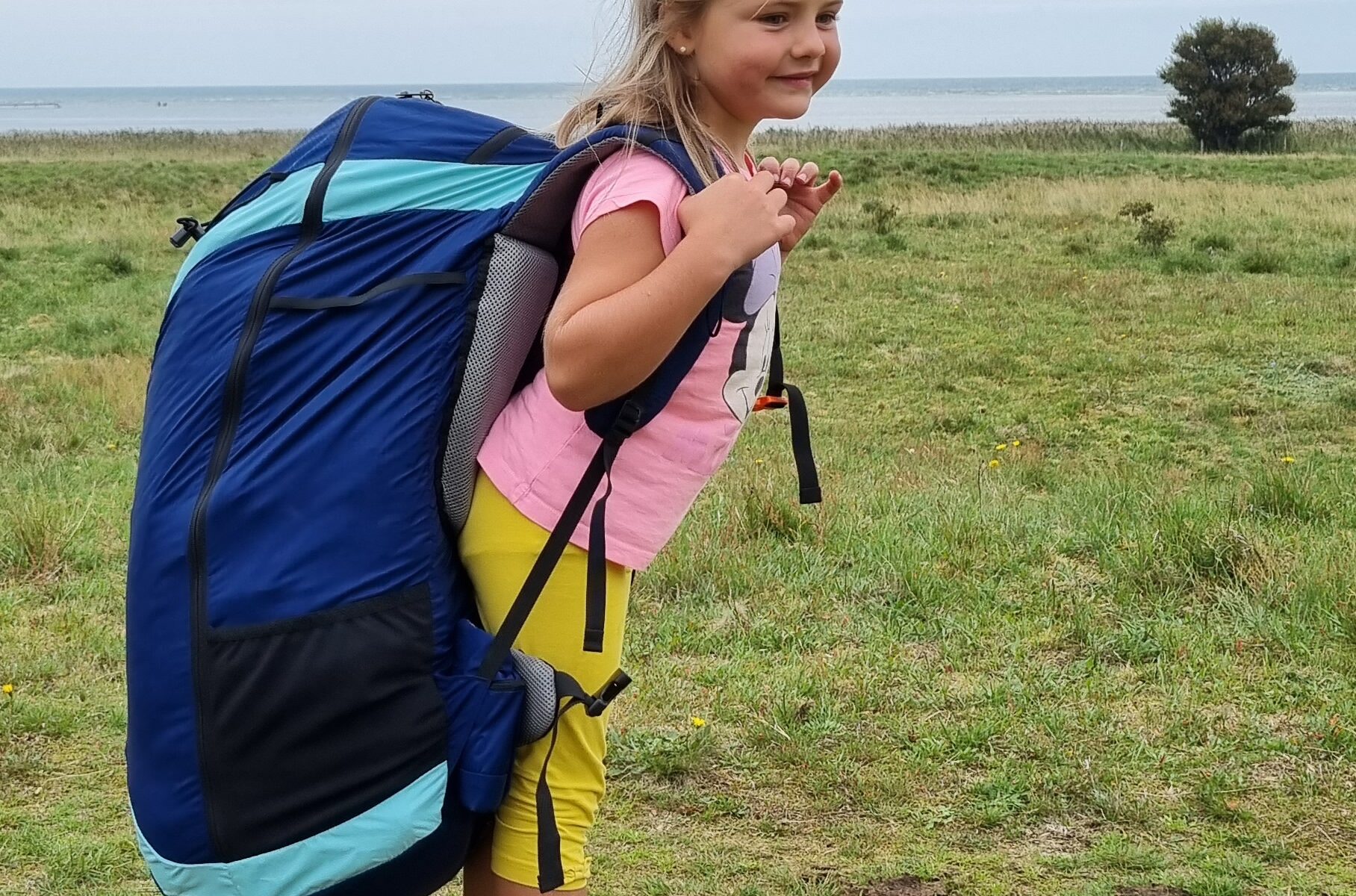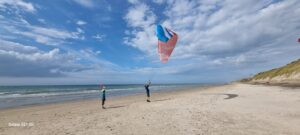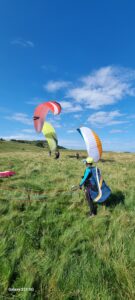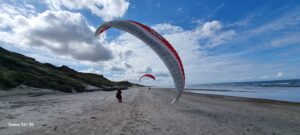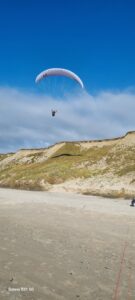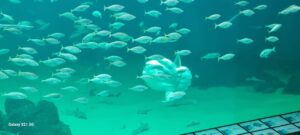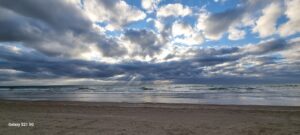We have run many successful Denmark Groundhandling Workshops (since 1994) and we never tire of travelling to this beautiful paragliding training, groundhandling and coastal soaring country again and again
Denmark is an ideal holiday destination in the summer months. The beaches are kilometres long and mostly free to walk or fly on (there are of course clear rules on flying behaviour)
The flying opportunities and practice areas in Denmark are countless
We are independent of the wind direction and have many alternative options
Our “dream destination” is of course flying over the highest elevation in Denmark, the approximately 90 metre high “Rubjerg Knude”, a shifting dune on the northern west coast of Denmark. Grassy dunes or sand dunes, there is a lot of flying variety in Denmark!
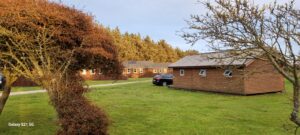
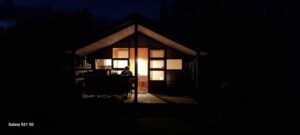
We are staying nearby, in Norre Lyngby at the campsite. There are also many very nice holiday homes available nearby, especially if you would like to travel there with your family or a group of friends to take part in our Groundhandling & Soaring Workshop.
…small, large, long, short, steep, flat dunes and grassy slopes, hills and cliffs to practise, try out, repeat and deepen the various wind-up, take-off and soaring techniques…
Hours of ground handling every day and hours of coastal soaring are the order of the day here
Every pilot can take part, regardless of skill or training level
“6 days, out on the beach, on the dune, on the cliff, on the slope”
Denmark is a very well organised and very friendly holiday destination for the whole family
In terms of flying, Denmark is a unique highlight that should not be missed in a paraglider pilot’s life !!!
P.S.: On days when you can’t fly, there are plenty of alternatives in Denmark, such as the unique aquarium in Hjorring
Further info+booking:
WhatsApp +39 380 587 6257 Mail: flugschulebassano@gmail.com
Denmark Travel Story 2025
Our Groundhandling & Dune Soaring Adventure in Denmark – August 2025
This year’s flying trip to Denmark was marked by pleasant temperatures, plenty of sunshine, and a wide variety of wind conditions that created the perfect choreography for our training and adventures.
Day 1
We began with an introduction round, a briefing on the flying area, general notes about Denmark, and our very first groundhandling session right on the beach.
With steady southwest winds at 15–25 km/h, we prepared our equipment, practiced cross-hooking while facing the glider, worked on grip and harness position, and learned to control the wing using only the front and rear risers. After some exercises in footwork and laying the glider down cleanly at the edge of the wind window, we enjoyed 1.5–2 hours of groundhandling in the morning and another 2–3 hours in the afternoon.
Day 2
The day started with a weather briefing and feedback from the first day, followed by an introduction to the cobra launch technique.
The winds were turbulent, coming from the south to southeast, gusting between 5 and 25 km/h—challenging conditions for sure, but after 2 hours of practice with A–C inflation and control, the first signs of success appeared.
In the afternoon, after a long break, we switched to the east coast, where we practiced “hiking with the wing open” on a grassy hill. Participants climbed the 50m slope multiple times, maneuvered sideways to the launch area, and set off into the air. With east winds at 10–20 km/h, it was the perfect training ground.
Day 3
Strong southeast winds and rain gave us a rest day. Instead of flying, we explored a new section of the cliffs, discussing terrain features and flight conditions to sharpen our judgment for different landscapes. In the afternoon, we went on a hike to the famous point where the North Sea and the Baltic Sea meet—a truly unforgettable natural spectacle.
Day 4
The wind shifted west and picked up to 15–30 km/h. In the morning, we practiced cobra launches and our very first soaring attempts from the beach. Thanks to the training of the past two days, everyone was able to apply the techniques well, and the experience of the wind gradient (how speed increases with height, even at just 15m difference) was new but highly valuable.
In the afternoon, we set off on a 3-hour hike along the west ridge to Rubjerg Knude, Denmark’s highest point and a wandering dune. From there we studied possible flight routes, learned to recognize windward and leeward situations, and felt the full force of the wind—up to 70 km/h—at the lighthouse.
Day 5
Bright sunshine and perfect west wind conditions awaited us. At the cliff launch site, however, it quickly became clear that both our current skills and the site conditions were not yet ideal for safe takeoffs. So we returned to the beach for more groundhandling, carefully working our way toward the first launches. Step by step, the group managed their first soaring flights on a small 15m dune. By the afternoon, even the first “cliff launches” in 25–30 km/h winds were successful, giving us a much deeper appreciation of the soaring experience.
Day 6
With steady north winds at 15–25 km/h, we moved to a new flying site. Everything we had learned throughout the week now came together: the first independent cobra launches, soaring flights lasting up to 1.5 hours, and even the first toplandings on an 80m grassy dune.
It was a thoroughly rewarding week filled with new skills, shared adventures, and unforgettable experiences. Everyone returned home safe and happy—already looking forward to next year’s Groundhandling & Dune Soaring Session in Denmark.

